#amazon rds automated backup
Explore tagged Tumblr posts
Text
Amazon Relation Database Service RDS Explained for Cloud Developers
Full Video Link - https://youtube.com/shorts/zBv6Tcw6zrU Hi, a new #video #tutorial on #amazonrds #aws #rds #relationaldatabaseservice is published on #codeonedigest #youtube channel. @java @awscloud @AWSCloudIndia @YouTube #youtube @codeonedig
Amazon Relational Database Service (Amazon RDS) is a collection of managed services that makes it simple to set up, operate, and scale relational databases in the cloud. You can choose from seven popular engines i.e., Amazon Aurora with MySQL & PostgreSQL compatibility, MySQL, MariaDB, PostgreSQL, Oracle, and SQL Server. It provides cost-efficient, resizable capacity for an industry-standard…
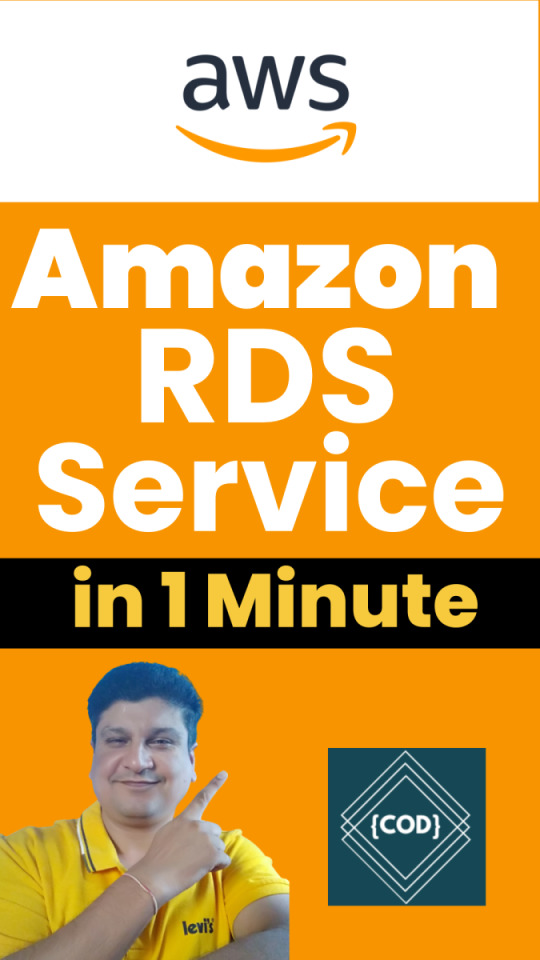
View On WordPress
#amazon rds access from outside#amazon rds aurora#amazon rds automated backup#amazon rds backup#amazon rds backup and restore#amazon rds guide#amazon rds snapshot export to s3#amazon rds vs aurora#amazon web services#aws#aws cloud#aws rds aurora tutorial#aws rds engine#aws rds explained#aws rds performance insights#aws rds tutorial#aws rds vs aurora#cloud computing#relational database#relational database management system#relational database service
1 note
·
View note
Text
Deep Dive into Protecting AWS EC2, RDS Instances and VPC
Veeam Backup for Amazon Web Services (Veeam Backup for AWS or VBAWS) protects and facilitates disaster recovery for Amazon Elastic Compute Cloud (EC2), Amazon Relational Database Service (RDS), Amazon DynamoDB, and Amazon Elastic File System (EFS) environments. In this article, we shall deep dive into Protecting AWS EC2 and RDS Instances and VPC (Amazon Virtual Private Cloud) configurations as…
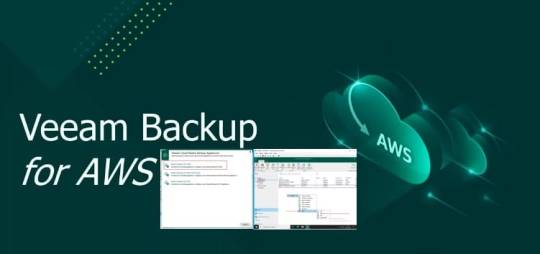
View On WordPress
#Amazon S3 Object Storage#AWS RDS Backups with Veeam#Database Backups#Protecting AWS EC2 and RDS#RDS Automated Backup#Veeam#Veeam Backup and Replication#Veeam Backup for AWS
0 notes
Text
Exploring the Power of Amazon Web Services: Top AWS Services You Need to Know
In the ever-evolving realm of cloud computing, Amazon Web Services (AWS) has established itself as an undeniable force to be reckoned with. AWS's vast and diverse array of services has positioned it as a dominant player, catering to the evolving needs of businesses, startups, and individuals worldwide. Its popularity transcends boundaries, making it the preferred choice for a myriad of use cases, from startups launching their first web applications to established enterprises managing complex networks of services. This blog embarks on an exploratory journey into the boundless world of AWS, delving deep into some of its most sought-after and pivotal services.

As the digital landscape continues to expand, understanding these AWS services and their significance is pivotal, whether you're a seasoned cloud expert or someone taking the first steps in your cloud computing journey. Join us as we delve into the intricate web of AWS's top services and discover how they can shape the future of your cloud computing endeavors. From cloud novices to seasoned professionals, the AWS ecosystem holds the keys to innovation and transformation.
Amazon EC2 (Elastic Compute Cloud): The Foundation of Scalability At the core of AWS's capabilities is Amazon EC2, the Elastic Compute Cloud. EC2 provides resizable compute capacity in the cloud, allowing you to run virtual servers, commonly referred to as instances. These instances serve as the foundation for a multitude of AWS solutions, offering the scalability and flexibility required to meet diverse application and workload demands. Whether you're a startup launching your first web application or an enterprise managing a complex network of services, EC2 ensures that you have the computational resources you need, precisely when you need them.
Amazon S3 (Simple Storage Service): Secure, Scalable, and Cost-Effective Data Storage When it comes to storing and retrieving data, Amazon S3, the Simple Storage Service, stands as an indispensable tool in the AWS arsenal. S3 offers a scalable and highly durable object storage service that is designed for data security and cost-effectiveness. This service is the choice of businesses and individuals for storing a wide range of data, including media files, backups, and data archives. Its flexibility and reliability make it a prime choice for safeguarding your digital assets and ensuring they are readily accessible.
Amazon RDS (Relational Database Service): Streamlined Database Management Database management can be a complex task, but AWS simplifies it with Amazon RDS, the Relational Database Service. RDS automates many common database management tasks, including patching, backups, and scaling. It supports multiple database engines, including popular options like MySQL, PostgreSQL, and SQL Server. This service allows you to focus on your application while AWS handles the underlying database infrastructure. Whether you're building a content management system, an e-commerce platform, or a mobile app, RDS streamlines your database operations.
AWS Lambda: The Era of Serverless Computing Serverless computing has transformed the way applications are built and deployed, and AWS Lambda is at the forefront of this revolution. Lambda is a serverless compute service that enables you to run code without the need for server provisioning or management. It's the perfect solution for building serverless applications, microservices, and automating tasks. The unique pricing model ensures that you pay only for the compute time your code actually uses. This service empowers developers to focus on coding, knowing that AWS will handle the operational complexities behind the scenes.
Amazon DynamoDB: Low Latency, High Scalability NoSQL Database Amazon DynamoDB is a managed NoSQL database service that stands out for its low latency and exceptional scalability. It's a popular choice for applications with variable workloads, such as gaming platforms, IoT solutions, and real-time data processing systems. DynamoDB automatically scales to meet the demands of your applications, ensuring consistent, single-digit millisecond latency at any scale. Whether you're managing user profiles, session data, or real-time analytics, DynamoDB is designed to meet your performance needs.
Amazon VPC (Virtual Private Cloud): Tailored Networking for Security and Control Security and control over your cloud resources are paramount, and Amazon VPC (Virtual Private Cloud) empowers you to create isolated networks within the AWS cloud. This isolation enhances security and control, allowing you to define your network topology, configure routing, and manage access. VPC is the go-to solution for businesses and individuals who require a network environment that mirrors the security and control of traditional on-premises data centers.
Amazon SNS (Simple Notification Service): Seamless Communication Across Channels Effective communication is a cornerstone of modern applications, and Amazon SNS (Simple Notification Service) is designed to facilitate seamless communication across various channels. This fully managed messaging service enables you to send notifications to a distributed set of recipients, whether through email, SMS, or mobile devices. SNS is an essential component of applications that require real-time updates and notifications to keep users informed and engaged.
Amazon SQS (Simple Queue Service): Decoupling for Scalable Applications Decoupling components of a cloud application is crucial for scalability, and Amazon SQS (Simple Queue Service) is a fully managed message queuing service designed for this purpose. It ensures reliable and scalable communication between different parts of your application, helping you create systems that can handle varying workloads efficiently. SQS is a valuable tool for building robust, distributed applications that can adapt to changes in demand.
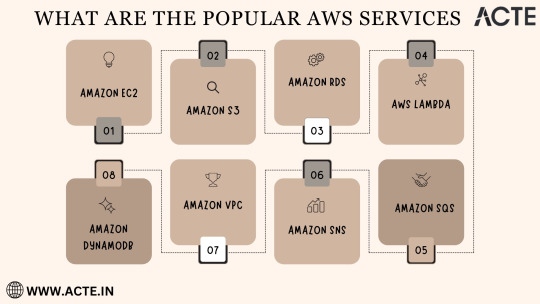
In the rapidly evolving landscape of cloud computing, Amazon Web Services (AWS) stands as a colossus, offering a diverse array of services that address the ever-evolving needs of businesses, startups, and individuals alike. AWS's popularity transcends industry boundaries, making it the go-to choice for a wide range of use cases, from startups launching their inaugural web applications to established enterprises managing intricate networks of services.
To unlock the full potential of these AWS services, gaining comprehensive knowledge and hands-on experience is key. ACTE Technologies, a renowned training provider, offers specialized AWS training programs designed to provide practical skills and in-depth understanding. These programs equip you with the tools needed to navigate and excel in the dynamic world of cloud computing.
With AWS services at your disposal, the possibilities are endless, and innovation knows no bounds. Join the ever-growing community of cloud professionals and enthusiasts, and empower yourself to shape the future of the digital landscape. ACTE Technologies is your trusted guide on this journey, providing the knowledge and support needed to thrive in the world of AWS and cloud computing.
8 notes
·
View notes
Text
Navigating the Cloud: Unleashing the Potential of Amazon Web Services (AWS)
In the dynamic realm of technological progress, Amazon Web Services (AWS) stands as a beacon of innovation, offering unparalleled advantages for enterprises, startups, and individual developers. This article will delve into the compelling reasons behind the adoption of AWS and provide a strategic roadmap for harnessing its transformative capabilities.

Unveiling the Strengths of AWS:
1. Dynamic Scalability: AWS distinguishes itself with its dynamic scalability, empowering users to effortlessly adjust infrastructure based on demand. This adaptability ensures optimal performance without the burden of significant initial investments, making it an ideal solution for businesses with fluctuating workloads.
2. Cost-Efficient Flexibility: Operating on a pay-as-you-go model, AWS delivers cost-efficiency by eliminating the need for large upfront capital expenditures. This financial flexibility is a game-changer for startups and businesses navigating the challenges of variable workloads.
3. Comprehensive Service Portfolio: AWS offers a comprehensive suite of cloud services, spanning computing power, storage, databases, machine learning, and analytics. This expansive portfolio provides users with a versatile and integrated platform to address a myriad of application requirements.
4. Global Accessibility: With a distributed network of data centers, AWS ensures low-latency access on a global scale. This not only enhances user experience but also fortifies application reliability, positioning AWS as the preferred choice for businesses with an international footprint.
5. Security and Compliance Commitment: Security is at the forefront of AWS's priorities, offering robust features for identity and access management, encryption, and compliance with industry standards. This commitment instills confidence in users regarding the safeguarding of their critical data and applications.
6. Catalyst for Innovation and Agility: AWS empowers developers by providing services that allow a concentrated focus on application development rather than infrastructure management. This agility becomes a catalyst for innovation, enabling businesses to respond swiftly to evolving market dynamics.
7. Reliability and High Availability Assurance: The redundancy of data centers, automated backups, and failover capabilities contribute to the high reliability and availability of AWS services. This ensures uninterrupted access to applications even in the face of unforeseen challenges.
8. Ecosystem Synergy and Community Support: An extensive ecosystem with a diverse marketplace and an active community enhances the AWS experience. Third-party integrations, tools, and collaborative forums create a rich environment for users to explore and leverage.
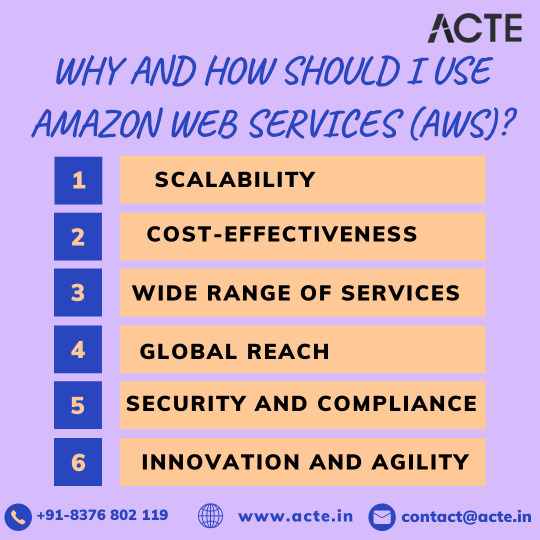
Charting the Course with AWS:
1. Establish an AWS Account: Embark on the AWS journey by creating an account on the AWS website. This foundational step serves as the gateway to accessing and managing the expansive suite of AWS services.
2. Strategic Region Selection: Choose AWS region(s) strategically, factoring in considerations like latency, compliance requirements, and the geographical location of the target audience. This decision profoundly impacts the performance and accessibility of deployed resources.
3. Tailored Service Selection: Customize AWS services to align precisely with the unique requirements of your applications. Common choices include Amazon EC2 for computing, Amazon S3 for storage, and Amazon RDS for databases.
4. Fortify Security Measures: Implement robust security measures by configuring identity and access management (IAM), establishing firewalls, encrypting data, and leveraging additional security features. This comprehensive approach ensures the protection of critical resources.
5. Seamless Application Deployment: Leverage AWS services to deploy applications seamlessly. Tasks include setting up virtual servers (EC2 instances), configuring databases, implementing load balancers, and establishing connections with various AWS services.
6. Continuous Optimization and Monitoring: Maintain a continuous optimization strategy for cost and performance. AWS monitoring tools, such as CloudWatch, provide insights into the health and performance of resources, facilitating efficient resource management.
7. Dynamic Scaling in Action: Harness the power of AWS scalability by adjusting resources based on demand. This can be achieved manually or through the automated capabilities of AWS Auto Scaling, ensuring applications can handle varying workloads effortlessly.
8. Exploration of Advanced Services: As organizational needs evolve, delve into advanced AWS services tailored to specific functionalities. AWS Lambda for serverless computing, AWS SageMaker for machine learning, and AWS Redshift for data analytics offer specialized solutions to enhance application capabilities.
Closing Thoughts: Empowering Success in the Cloud
In conclusion, Amazon Web Services transcends the definition of a mere cloud computing platform; it represents a transformative force. Whether you are navigating the startup landscape, steering an enterprise, or charting an individual developer's course, AWS provides a flexible and potent solution.
Success with AWS lies in a profound understanding of its advantages, strategic deployment of services, and a commitment to continuous optimization. The journey into the cloud with AWS is not just a technological transition; it is a roadmap to innovation, agility, and limitless possibilities. By unlocking the full potential of AWS, businesses and developers can confidently navigate the intricacies of the digital landscape and achieve unprecedented success.
2 notes
·
View notes
Text
AWS RDS: Simplifying Database Management in the Cloud
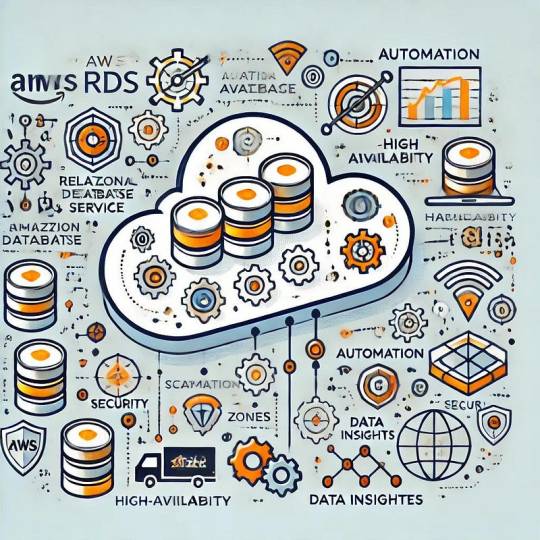
AWS RDS: Simplifying Database Management in the Cloud Amazon Relational Database Service (AWS RDS) is a fully managed service that makes setting up, operating, and scaling relational databases in the cloud simple and efficient.
AWS RDS supports popular database engines such as MySQL, PostgreSQL, Oracle, SQL Server, MariaDB, and Amazon Aurora, offering users flexibility in choosing the right database for their applications.
Key Features:
Automated Management: RDS handles routine database tasks like backups, patching, and scaling, reducing operational overhead.
High Availability: With Multi-AZ (Availability Zone) deployments, RDS ensures failover support and business continuity.
Scalability: It allows seamless scaling of database storage and compute resources to meet changing demands.
Security: Offers encryption at rest and in transit, along with integration with AWS IAM and VPC for access control.
Monitoring: Provides performance insights and integration with Amazon CloudWatch for tracking database health and metrics.
Benefits: Reduces the complexity of managing on-premises databases.
Saves time with automatic provisioning and maintenance.
Supports disaster recovery and high availability, crucial for modern applications.
Common Use Cases:
E-commerce platforms with MySQL or PostgreSQL databases.
Analytics applications using Amazon Aurora for faster query performance. Enterprise applications relying on SQL Server or Oracle databases.
AWS RDS is an ideal solution for developers and businesses looking to focus on building applications rather than managing databases.
WEBSITE: https://www.ficusoft.in/aws-training-in-chennai/
0 notes
Text
🌟 Mastering AWS S3: A Comprehensive Guide 🌟
🚀 Introduction
In today’s digital age, cloud storage is the backbone of modern businesses and developers. 🌐 And when it comes to AWS S3 (Amazon Simple Storage Service), you’re looking at one of the most reliable and scalable solutions out there. 💪 Whether it’s hosting websites, backing up data, or handling big data analytics, AWS S3 has your back. 🙌
This guide breaks down everything you need to know about AWS S3: its features, benefits, use cases, and tips to unlock its full potential. 💎
📂 What is AWS S3?
AWS S3 is your go-to cloud-based storage solution. ☁️ It’s like having a digital vault that scales endlessly to store and retrieve your data. First launched in 2006, it’s now a must-have for businesses worldwide 🌍.
AWS S3 organizes data into “buckets” 🪣, where each bucket acts as a container for objects (aka files 🗂️). Add in metadata and unique keys, and voilà—you’ve got a seamless storage solution!
🔑 Key Concepts:
Buckets: Think of them as folders for your data 📂.
Objects: The actual files stored within S3 📁.
Keys: Unique IDs to find your files easily 🔍.
Regions: Choose physical data storage locations for faster access and compliance. 🌎
✨ Key Features of AWS S3
Here’s why AWS S3 is a crowd favorite 🌟:
1. 🚀 Scalability
It grows with you! Store as much data as you need without limits. 📈
2. 🛡️ Durability and Availability
Your data is ultra-safe with 99.999999999% durability—talk about reliability! 💾✨
3. 🔒 Security
Enjoy top-notch encryption (both at rest and in transit) and granular access controls. 🔐
4. 🔄 Versioning
Never lose an important file again! Keep multiple versions of your objects. 🕰️
5. 🏷️ Storage Classes
Optimize costs with different storage classes like Standard, Glacier, and Intelligent-Tiering. 💰💡
6. 🌍 Data Transfer Acceleration
Speed up your transfers using Amazon’s global network. 🚄
7. 🔧 Lifecycle Management
Automate data transitions and deletions based on policies. 📜🤖
💡 Benefits of Using AWS S3
1. 💵 Cost-Effectiveness
With pay-as-you-go pricing, you only pay for what you actually use! 🛒
2. 🌏 Global Reach
Store your data in multiple AWS regions for lightning-fast access. ⚡
3. 🔗 Seamless Integration
Works flawlessly with AWS services like Lambda, EC2, and RDS. 🔄
4. 🛠️ Versatility
From hosting static websites to enabling machine learning, S3 does it all! 🤹♂️
5. 👩💻 Developer-Friendly
Packed with SDKs, APIs, and CLI tools to make life easier. 🎯
📚 Common Use Cases
Here’s how businesses use AWS S3 to shine ✨:
1. 🔄 Backup and Recovery
Protect critical data with reliable backups. 🔄💾
2. 🌐 Content Delivery
Host websites, images, and videos, and pair it with CloudFront for blazing-fast delivery. 🌟📽️
3. 📊 Big Data Analytics
Store and process huge datasets with analytics tools like EMR and Athena. 📈🔍
4. 🎥 Media Hosting
Perfect for storing high-res images and streaming videos. 📸🎬
5. ⚙️ Application Hosting
Store app data like configs and logs effortlessly. 📱🗂️
🔒 Security and Compliance
AWS S3 keeps your data safe and sound 🔐:
Encryption: Server-side and client-side options for ironclad security. 🔐✨
Access Control: Fine-tune who can access what using IAM and ACLs. 🗝️
Compliance: Certified for standards like GDPR, HIPAA, and PCI DSS. 🏆
Monitoring: Stay alert with AWS CloudTrail and Amazon Macie. 👀🔔
📈 Best Practices for Using AWS S3
Enable Versioning: Keep multiple versions to avoid accidental data loss. 🔄
Use Lifecycle Policies: Automate data transitions to save costs. 💡
Secure Your Data: Lock it down with encryption and IAM policies. 🔒✨
Monitor Usage: Stay on top of things with AWS CloudWatch. 📊👀
Optimize Storage Classes: Match the class to your data needs for cost-efficiency. 🏷️
💰 AWS S3 Pricing Overview
AWS S3 pricing is straightforward: pay for what you use! 💵 Pricing depends on:
Storage consumed 📦
Data retrieval 📤
Data transfer 🌐
Operations and requests 🔄
Choose the right storage class and region to keep costs low. 🧮💡
🔗 Integration with Other AWS Services
S3 works hand-in-hand with AWS tools to supercharge your workflows:
AWS Lambda: Trigger functions on S3 events. ⚙️
Amazon CloudFront: Deliver content globally at top speeds. 🌍💨
Amazon RDS: Store database backups with ease. 📂
Amazon SageMaker: Use S3 for training machine learning models. 🤖📊
🌟 Conclusion
AWS S3 is the ultimate cloud storage solution—reliable, scalable, and packed with features. 💪 Whether you’re a small startup or a global enterprise, S3 can handle it all. 💼✨
For even more insights, check out Hexahome Blogs, where we uncover the latest trends in tech, cloud computing, and beyond! 📖💡
📝 Learn More with Hexahome Blogs
Hexadecimal Software is your go-to partner for software development and IT services. 🌟 From cloud solutions to cutting-edge apps, we make your digital dreams a reality. 🌈💻
And don’t forget to explore Hexahome—your one-stop shop for everything tech, lifestyle, and more! 🚀📱
Get started with AWS S3 today and watch your business soar! 🌍✨
0 notes
Text
Why AWS is a Game Changer for Your Cloud Journey
If you’ve been diving into the world of cloud computing, chances are you’ve heard of AWS (Amazon Web Services). It’s the go-to platform for everything from small startups to massive enterprises. But what’s all the hype about? Why is AWS so popular? Let’s break it down!
What Exactly is AWS?
Simply put, AWS is a cloud platform that gives you access to a bunch of powerful services like computing power, storage, databases, and machine learning tools. Instead of dealing with physical servers or complex IT setups, you can run your business or app directly in the cloud. And the best part? It's scalable, flexible, and super secure.

Why Should You Care About AWS?
Here are some reasons AWS is a big deal:
Super Scalable: As your business grows, you can easily increase your cloud resources with a few clicks—no need to worry about capacity issues!
Cost-Effective: Pay for what you use. No huge upfront costs like traditional hardware—just what you need, when you need it.
Top-Notch Security: With built-in encryption and a ton of compliance certifications, your data stays protected.
Global Reach: AWS runs data centers all over the world, meaning faster, more reliable performance wherever your users are.
Cutting-Edge Services: AWS is constantly rolling out cool new features like AI, machine learning, and advanced data analytics. Basically, it’s perfect for staying ahead in today’s tech-driven world.
Must-Know AWS Services
1. EC2 (Elastic Compute Cloud)
Think of EC2 as your customizable virtual server. Whether you need a small instance for a project or a beefy one to handle high traffic, EC2 lets you scale on demand.
2. S3 (Simple Storage Service)
Need storage? S3 is your best friend. It’s a flexible, secure storage service that scales automatically and is perfect for large files (like photos, videos, or backups).
3. Lambda
Forget managing servers. Lambda lets you run code without worrying about infrastructure. It’s great for event-driven apps (like those microservices or serverless setups you keep hearing about).
4. RDS (Relational Database Service)
If you need to manage a database (and who doesn’t?), RDS makes it easy. It automates the boring stuff like backups and scaling, so you can focus on building your app.
5. VPC (Virtual Private Cloud)
Set up your own private network with VPC. Think of it as your cloud’s “secure zone,” where you control who gets in and what they can access.
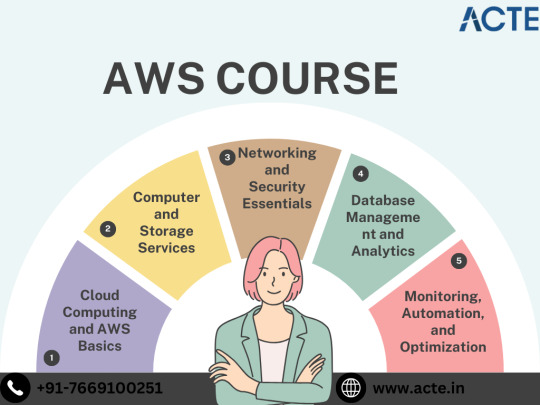
How AWS Helps Different Businesses
Startups & Small Biz
Startups don’t have to worry about investing in hardware. You pay only for what you use, and you can scale as you grow. Imagine running a new app without a giant upfront cost or IT infrastructure to manage. Sounds dreamy, right?
Enterprises & Large Companies
AWS scales up to handle massive workloads. Need to manage huge databases or run advanced AI models? AWS can handle it all. Plus, it’s compliant with global regulations, so you don’t have to worry about security.
Developers & DevOps
For developers, AWS offers tools to streamline development, from building apps to deploying them automatically. Whether it’s using Elastic Beanstalk for app deployment or CodePipeline to automate the release process, AWS makes life easier.
How to Get Started with AWS
Create Your AWS Account: It’s super simple to sign up. Once you’re in, you’ll have access to all AWS services.
Explore the Free Tier: AWS has a free tier that lets you try many services without paying a cent. Perfect for beginners!
Check Out the Docs: AWS has detailed tutorials and resources to guide you through setting up and using their services.
Scale When You’re Ready: As your needs grow, you can scale up your services without breaking a sweat.
Final Thoughts
AWS is changing the game when it comes to cloud computing. With its powerful features, scalability, and security, it’s no surprise that so many businesses trust it to run their operations. Whether you're just starting out or scaling big, AWS has everything you need to succeed.
So, what are you waiting for? Dive into the cloud with AWS and take your business (or project) to the next level.
1 note
·
View note
Video
youtube
Amazon RDS Multi-AZ | Ensuring High Availability and Reliability
Achieve unparalleled high availability and reliability with Amazon RDS Multi-AZ deployments, a feature designed to provide automatic failover and seamless disaster recovery for your Amazon RDS databases. Ideal for mission-critical applications requiring continuous database availability, Multi-AZ ensures your databases remain operational even in the event of an infrastructure failure.
Key Features:
- Automatic Failover: Instantly switch to a standby instance in a different Availability Zone (AZ) without manual intervention, minimizing downtime and ensuring continuous availability. - Synchronous Replication: Maintain data consistency across primary and standby instances with synchronous replication, ensuring that changes are reflected in real-time. - Backup and Restore: Benefit from automatic backups and snapshots that are consistent across both the primary and standby instances, simplifying data recovery and minimizing data loss. - Maintenance Updates: Apply software patches and updates to the primary instance, with changes automatically applied to the standby instance, ensuring minimal disruption and high availability. - Enhanced Durability: Achieve greater data durability with data replicated across multiple AZs, protecting against hardware failures and other disruptions.
Use Cases:
- Mission-Critical Applications: Essential for applications where database downtime cannot be tolerated, such as financial systems, e-commerce platforms, and healthcare systems. - Disaster Recovery: Perfect for organizations needing robust disaster recovery solutions to ensure business continuity in the event of a regional failure. - Compliance and Regulations: Ideal for businesses subject to regulatory requirements for data availability and redundancy, ensuring compliance with industry standards.
Key Benefits:
1. High Availability: Ensure continuous database operations with automatic failover and redundancy across multiple AZs, providing robust support for critical workloads. 2. Reduced Downtime: Minimize the impact of maintenance or infrastructure failures with automated failover, keeping your applications available and responsive. 3. Simplified Management: Ease administrative burdens with automated backups, software patching, and seamless failover processes. 4. Data Consistency: Maintain real-time data consistency with synchronous replication, ensuring that your standby instance is always up-to-date with the latest changes. 5. Increased Reliability: Protect your data from hardware failures and other issues with a highly durable and resilient database environment.
Conclusion:
Amazon RDS Multi-AZ provides a powerful solution for ensuring high availability and reliability for your databases. By leveraging automatic failover, synchronous replication, and robust disaster recovery features, you can safeguard your mission-critical applications against downtime and data loss. Explore how Multi-AZ deployments can enhance your database infrastructure, delivering the reliability and resilience needed to support your most important business functions.
#amazon #rds #database #S3 #aws #devops #amazonwebservices #free #awscourse #awstutorial #devops #awstraining #cloudolus #naimhossenpro #ssl #storage #cloudcomputing #dbs #free
***************************** *Follow Me* https://www.facebook.com/cloudolus/ | https://www.facebook.com/groups/cloudolus | https://www.linkedin.com/groups/14347089/ | https://www.instagram.com/cloudolus/ | https://twitter.com/cloudolus | https://www.pinterest.com/cloudolus/ | https://www.youtube.com/@cloudolus | https://www.youtube.com/@ClouDolusPro | https://discord.gg/GBMt4PDK | https://www.tumblr.com/cloudolus | https://cloudolus.blogspot.com/ | https://t.me/cloudolus | https://www.whatsapp.com/channel/0029VadSJdv9hXFAu3acAu0r | https://chat.whatsapp.com/D6I4JafCUVhGihV7wpryP2 *****************************
*🔔Subscribe & Stay Updated:* Don't forget to subscribe and hit the bell icon to receive notifications and stay updated on our latest videos, tutorials & playlists! *ClouDolus:* https://www.youtube.com/@cloudolus *ClouDolus AWS DevOps:* https://www.youtube.com/@ClouDolusPro *THANKS FOR BEING A PART OF ClouDolus! 🙌✨*
#youtube#amazon rdsrds multi az deploymentrdsmysql rds awscloud computingaws rds como instalarrds mysql workbenchaws cloudamazon web servicescloudolu#amazon#rds#database#S3#devops#cloudolus#naimhossenpro#cloudoluspro
0 notes
Text
Comparing Amazon RDS and Aurora: Key Differences Explained
When it comes to choosing a database solution in the cloud, Amazon Web Services (AWS) offers a range of powerful options, with Amazon Relational Database Service (RDS) and Amazon Aurora being two of the most popular. Both services are designed to simplify database management, but they cater to different needs and use cases. In this blog, we’ll delve into the key differences between Amazon RDS and Aurora to help you make an informed decision for your applications.
If you want to advance your career at the AWS Course in Pune, you need to take a systematic approach and join up for a course that best suits your interests and will greatly expand your learning path.
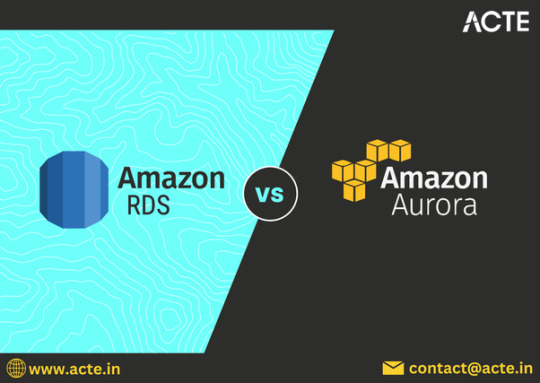
What is Amazon RDS?
Amazon RDS is a fully managed relational database service that supports multiple database engines, including MySQL, PostgreSQL, MariaDB, Oracle, and Microsoft SQL Server. It automates routine database tasks such as backups, patching, and scaling, allowing developers to focus more on application development rather than database administration.
Key Features of RDS
Multi-Engine Support: Choose from various database engines to suit your specific application needs.
Automated Backups: RDS automatically backs up your data and provides point-in-time recovery.
Read Replicas: Scale read operations by creating read replicas to offload traffic from the primary instance.
Security: RDS offers encryption at rest and in transit, along with integration with AWS Identity and Access Management (IAM).
What is Amazon Aurora?
Amazon Aurora is a cloud-native relational database designed for high performance and availability. It is compatible with MySQL and PostgreSQL, offering enhanced features that improve speed and reliability. Aurora is built to handle demanding workloads, making it an excellent choice for large-scale applications.
Key Features of Aurora
High Performance: Aurora can deliver up to five times the performance of standard MySQL databases, thanks to its unique architecture.
Auto-Scaling Storage: Automatically scales storage from 10 GB to 128 TB without any downtime, adapting to your needs seamlessly.
High Availability: Data is automatically replicated across multiple Availability Zones for robust fault tolerance and uptime.
Serverless Option: Aurora Serverless automatically adjusts capacity based on application demand, ideal for unpredictable workloads.
To master the intricacies of AWS and unlock its full potential, individuals can benefit from enrolling in the AWS Online Training.
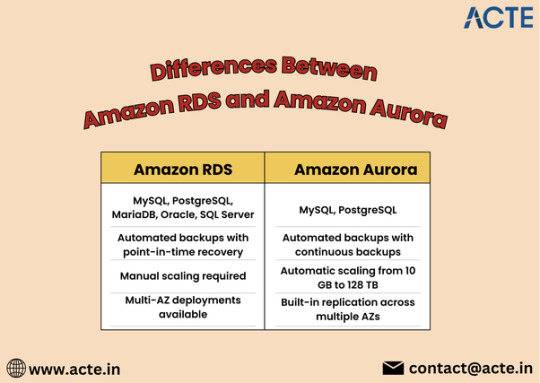
Key Differences Between Amazon RDS and Aurora
1. Performance and Scalability
One of the most significant differences lies in performance. Aurora is engineered for high throughput and low latency, making it a superior choice for applications that require fast data access. While RDS provides good performance, it may not match the efficiency of Aurora under heavy loads.
2. Cost Structure
Both services have different pricing models. RDS typically has a more straightforward pricing structure based on instance types and storage. Aurora, however, incurs costs based on the volume of data stored, I/O operations, and instance types. While Aurora may seem more expensive initially, its performance gains can result in cost savings for high-traffic applications.
3. High Availability and Fault Tolerance
Aurora inherently offers better high availability due to its design, which replicates data across multiple Availability Zones. While RDS does offer Multi-AZ deployments for high availability, Aurora’s replication and failover mechanisms provide additional resilience.
4. Feature Set
Aurora includes advanced features like cross-region replication and global databases, which are not available in standard RDS. These capabilities make Aurora an excellent option for global applications that require low-latency access across regions.
5. Management and Maintenance
Both services are managed by AWS, but Aurora requires less manual intervention for scaling and maintenance due to its automated features. This can lead to reduced operational overhead for businesses relying on Aurora.
When to Choose RDS or Aurora
Choose Amazon RDS if you need a straightforward, managed relational database solution with support for multiple engines and moderate performance needs.
Opt for Amazon Aurora if your application demands high performance, scalability, and advanced features, particularly for large-scale or global applications.
Conclusion
Amazon RDS and Amazon Aurora both offer robust solutions for managing relational databases in the cloud, but they serve different purposes. Understanding the key differences can help you select the right service based on your specific requirements. Whether you go with the simplicity of RDS or the advanced capabilities of Aurora, AWS provides the tools necessary to support your database needs effectively.
0 notes
Text
Unlock Business Potential with AWS Managed Services by Goognu

AWS Managed Services | Goognu
In today’s rapidly evolving digital landscape, businesses increasingly turn to cloud solutions to meet their operational needs. Amazon Web Services (AWS) has emerged as a market leader, offering a robust and flexible platform for hosting, managing, and optimizing applications and infrastructure. However, managing AWS environments efficiently requires expertise, which is where AWS Managed Services come into play. For over a decade, Goognu has been a trusted partner for businesses worldwide, offering comprehensive AWS solutions that optimize cloud operations and enhance business outcomes.
What are AWS Managed Services?
AWS Managed Services is a suite of services designed to simplify the management of AWS resources. These services alleviate the operational burden of managing cloud infrastructure, enabling businesses to focus on their core competencies. AWS Managed Services encompass provisioning, monitoring, security, compliance, backup, and disaster recovery while ensuring system optimization and continuous support.
At its core, an AWS Managed Service Provider (MSP) acts as an intermediary between businesses and the AWS platform, tailoring AWS resources to meet specific operational needs. Goognu, a leading AWS MSP, has built a reputation for excellence by providing businesses with customized solutions, from designing and deploying cloud infrastructure to ongoing management and optimization.
Why Choose AWS Managed Services?
Managing AWS environments can be complex and resource-intensive. AWS Managed Services help businesses address these challenges through expert guidance and reliable support. Here are some key advantages:
Simplified Operations: By outsourcing AWS infrastructure management, businesses can focus on innovation and growth rather than operational complexities.
Enhanced Performance: AWS MSPs like Goognu optimize resources to ensure high system performance and scalability.
Improved Security: With robust practices, including Identity and Access Management (IAM) and compliance monitoring, businesses benefit from secure cloud environments.
Cost Efficiency: Automated processes reduce manual intervention, saving time and resources while maintaining reliability.
24/7 Support: Dedicated support ensures seamless operation and immediate resolution of technical issues.
Goognu: Your Trusted Partner in AWS Managed Services
Goognu has been at the forefront of providing AWS Managed Services for over 10 years. Their commitment to quality, customer satisfaction, and reliability makes them a trusted name for businesses across industries. Goognu offers a comprehensive range of AWS services, tailored to meet the unique needs of every client.
Expertise and Experience
With a team of AWS-certified experts, Goognu brings in-depth knowledge and hands-on experience to every project. Their expertise spans designing, deploying, managing, and optimizing AWS environments. Whether it’s migrating projects to the cloud, integrating services, or offering ongoing support, Goognu ensures seamless transitions and efficient management.
Comprehensive AWS Solutions
Goognu’s AWS Managed Services encompass various operational tasks, such as:
Provisioning and Configuration: Setting up virtual servers (EC2 instances), storage (S3, EBS), and networking components (VPC, ELB, Route 53).
Monitoring and Optimization: Identifying bottlenecks, fine-tuning configurations, and implementing auto-scaling, load balancing, and caching mechanisms.
Database Solutions: Managing databases with Amazon RDS and DynamoDB for performance optimization and secure backups.
Security and Compliance: Leveraging AWS tools like IAM and AWS CloudFormation to maintain secure and compliant infrastructure.
Features of Goognu's AWS Managed Services
1. Scalability
Goognu helps businesses scale their operations effortlessly, handling high-demand periods or large workloads without the need for additional infrastructure investments. This scalability ensures applications remain responsive and reliable, even under heavy usage.
2. Automation
Automation is a key component of Goognu’s approach. By automating tasks such as software updates, deployment, and configuration, businesses can minimize errors, save time, and focus on strategic goals.
3. Monitoring
Goognu implements robust monitoring solutions to provide real-time insights into system performance. Proactive monitoring helps identify potential issues before they escalate, ensuring consistent uptime and reliability.
4. 24/7 Support
Goognu offers round-the-clock support to address customer needs anytime. Their dedicated team ensures businesses never face operational challenges alone.
5. Cost Optimization
Goognu helps clients optimize costs by recommending the best-suited AWS services and configurations, reducing unnecessary expenses while maximizing value.
Why Choose Goognu for AWS Managed Services?
Goognu stands out as a leading AWS Managed Service Provider for several reasons:
Extensive Experience: With over 13 years of experience, Goognu has a proven track record of helping businesses succeed in their cloud journey.
Robust Security: Goognu prioritizes security, ensuring that customer data and applications are protected against threats.
Cost Efficiency: Their expertise helps clients achieve significant savings on infrastructure costs.
Unmatched Support: Goognu’s 24/7 support ensures peace of mind for clients, enabling them to focus on their core operations.
Goognu’s Approach to AWS Managed Services
Goognu adopts a structured approach to ensure optimal outcomes for their clients:
Initial Assessment: A thorough evaluation of the current system to identify gaps and opportunities for improvement.
Customized Strategy: Tailoring AWS solutions to meet specific business needs, incorporating best practices and advanced tools.
Implementation and Support: Seamless deployment of AWS resources with ongoing support to ensure sustained performance and reliability.
Major Services Offered by Goognu
CI/CD Pipelines: Comprehensive solutions for continuous integration and delivery.
Infrastructure Automation: Streamlining development processes with configuration management and automation tools.
Quality and Reliability: Ensuring stable application performance with version control, automated testing, and secure backups.
Disaster Recovery: Strategies to prepare for and mitigate the impact of unexpected disruptions.
The Future of AWS Managed Services with Goognu
As cloud technology continues to evolve, Goognu remains committed to helping businesses stay ahead of the curve. Their innovative solutions, coupled with a customer-centric approach, make them a preferred partner for AWS Managed Services. By leveraging Goognu’s expertise, businesses can unlock new opportunities, achieve operational excellence, and drive sustainable growth.
Conclusion
In a competitive business landscape, managing AWS environments efficiently is crucial for success. Goognu, as a trusted AWS Managed Service Provider, offers comprehensive solutions to help businesses optimize their cloud infrastructure. With a focus on scalability, automation, security, and 24/7 support, Goognu empowers organizations to achieve their goals while reducing operational burdens. If you're ready to transform your cloud journey, Goognu's AWS Managed Services is the partner you need.
0 notes
Text
10+ AWS Projects for Students to Showcase Cloud Skills

Cloud computing has revolutionized how businesses and individuals manage data, offering scalable and reliable solutions. Amazon Web Services (AWS) is at the forefront of this transformation, providing a vast array of tools and services for deploying, managing, and optimizing applications. For students eager to showcase their cloud skills, working on AWS projects can be a great way to gain hands-on experience and enhance their portfolios.https://internshipgate.com
Here’s a list of 10+ AWS projects that students can explore to demonstrate their cloud computing expertise:
1. Build a Static Website on AWS S3
Host a fully functional static website using AWS S3. Combine it with Amazon CloudFront for faster content delivery and Route 53 for domain management.
Skills Highlighted: S3 bucket setup, DNS configuration, content delivery network (CDN) integration.
2. Create a Personal Portfolio Using AWS Amplify
AWS Amplify simplifies app development and hosting. Build a personal portfolio showcasing your AWS projects and deploy it using Amplify.
Skills Highlighted: Frontend development, CI/CD, deployment pipeline.
3. Deploy a Serverless Application Using AWS Lambda
Develop a serverless application that performs specific tasks (e.g., image processing or text analysis) using AWS Lambda. Integrate it with API Gateway and DynamoDB for data storage.
Skills Highlighted: Serverless architecture, API integration, database management.
4. Set Up a Virtual Private Cloud (VPC)
Design a secure and scalable AWS VPC. Configure subnets, route tables, and internet gateways. Optionally, simulate a hybrid cloud by integrating with an on-premises network using AWS VPN.
Skills Highlighted: Networking, security, infrastructure setup.
5. Launch a Machine Learning Model on AWS SageMaker
Train and deploy a machine learning model using Amazon SageMaker. Use datasets from Kaggle or AWS Open Data Registry to predict trends or analyze data.
Skills Highlighted: Machine learning, data preprocessing, model deployment.
6. Implement a Real-Time Chat Application
Build a chat application using AWS AppSync for real-time data syncing. Combine it with Cognito for user authentication and DynamoDB for storing messages.
Skills Highlighted: Real-time data synchronization, user management, app development.
7. Design an IoT System with AWS IoT Core
Create an IoT application where devices send data to AWS IoT Core. Visualize this data using AWS QuickSight or store it in Amazon RDS for analytics.
Skills Highlighted: IoT integration, data visualization, cloud database management.
8. Build a Scalable E-Commerce Platform
Develop an e-commerce prototype using Amazon EC2 for hosting, RDS for database management, and S3 for storing product images. Enhance the platform with CloudFront for speed optimization.
Skills Highlighted: Full-stack development, scalability, cloud storage.
9. Implement Disaster Recovery with AWS Backup
Simulate a disaster recovery system by configuring AWS Backup to automatically create backups of your database and storage. Test restoring from backups to ensure reliability.
Skills Highlighted: Backup management, reliability engineering, disaster recovery.
10. Analyze Big Data with AWS Glue and Athena
Extract and transform data using AWS Glue and query it using Athena. Pair this project with Amazon S3 for storage and QuickSight for visualization.
Skills Highlighted: Data analysis, ETL (Extract, Transform, Load), data querying.
11. Create a Photo Album Using AWS Rekognition
Develop a photo album application that uses Amazon Rekognition to analyze and tag uploaded photos. Add search functionality based on identified objects or people.
Skills Highlighted: AI/ML integration, image processing, app functionality.
12. Host a CI/CD Pipeline with AWS CodePipeline
Set up a CI/CD pipeline for a simple app using AWS CodePipeline. Integrate it with CodeCommit for version control and CodeBuild for automated builds.
Skills Highlighted: DevOps, CI/CD, version control integration.
Tips to Maximize Your Learning
Start with small projects and gradually move to complex ones.
Document your process on GitHub or a personal blog to share your learning.
Explore AWS Free Tier to keep costs manageable during project development.
Join AWS communities or forums to seek help and collaborate with peers.
Conclusion
Completing AWS projects not only helps you understand cloud computing concepts but also gives you practical experience with industry-relevant tools. Whether you’re building applications, managing infrastructure, or exploring AI, these projects will make your portfolio stand out to potential employers.https://internshipgate.com
#career#internship#virtualinternship#internshipgate#internship in india#education#cloud computing#aws cloud#aws course#projects
0 notes
Text
Your Journey Through the AWS Universe: From Amateur to Expert
In the ever-evolving digital landscape, cloud computing has emerged as a transformative force, reshaping the way businesses and individuals harness technology. At the forefront of this revolution stands Amazon Web Services (AWS), a comprehensive cloud platform offered by Amazon. AWS is a dynamic ecosystem that provides an extensive range of services, designed to meet the diverse needs of today's fast-paced world.

This guide is your key to unlocking the boundless potential of AWS. We'll embark on a journey through the AWS universe, exploring its multifaceted applications and gaining insights into why it has become an indispensable tool for organizations worldwide. Whether you're a seasoned IT professional or a newcomer to cloud computing, this comprehensive resource will illuminate the path to mastering AWS and leveraging its capabilities for innovation and growth. Join us as we clarify AWS and discover how it is reshaping the way we work, innovate, and succeed in the digital age.
Navigating the AWS Universe:
Hosting Websites and Web Applications: AWS provides a secure and scalable place for hosting websites and web applications. Services like Amazon EC2 and Amazon S3 empower businesses to deploy and manage their online presence with unwavering reliability and high performance.
Scalability: At the core of AWS lies its remarkable scalability. Organizations can seamlessly adjust their infrastructure according to the ebb and flow of workloads, ensuring optimal resource utilization in today's ever-changing business environment.
Data Storage and Backup: AWS offers a suite of robust data storage solutions, including the highly acclaimed Amazon S3 and Amazon EBS. These services cater to the diverse spectrum of data types, guaranteeing data security and perpetual availability.
Databases: AWS presents a panoply of database services such as Amazon RDS, DynamoDB, and Redshift, each tailored to meet specific data management requirements. Whether it's a relational database, a NoSQL database, or data warehousing, AWS offers a solution.
Content Delivery and CDN: Amazon CloudFront, AWS's content delivery network (CDN) service, ushers in global content distribution with minimal latency and blazing data transfer speeds. This ensures an impeccable user experience, irrespective of geographical location.
Machine Learning and AI: AWS boasts a rich repertoire of machine learning and AI services. Amazon SageMaker simplifies the development and deployment of machine learning models, while pre-built AI services cater to natural language processing, image analysis, and more.
Analytics: In the heart of AWS's offerings lies a robust analytics and business intelligence framework. Services like Amazon EMR enable the processing of vast datasets using popular frameworks like Hadoop and Spark, paving the way for data-driven decision-making.
IoT (Internet of Things): AWS IoT services provide the infrastructure for the seamless management and data processing of IoT devices, unlocking possibilities across industries.
Security and Identity: With an unwavering commitment to data security, AWS offers robust security features and identity management through AWS Identity and Access Management (IAM). Users wield precise control over access rights, ensuring data integrity.
DevOps and CI/CD: AWS simplifies DevOps practices with services like AWS CodePipeline and AWS CodeDeploy, automating software deployment pipelines and enhancing collaboration among development and operations teams.
Content Creation and Streaming: AWS Elemental Media Services facilitate the creation, packaging, and efficient global delivery of video content, empowering content creators to reach a global audience seamlessly.
Migration and Hybrid Cloud: For organizations seeking to migrate to the cloud or establish hybrid cloud environments, AWS provides a suite of tools and services to streamline the process, ensuring a smooth transition.
Cost Optimization: AWS's commitment to cost management and optimization is evident through tools like AWS Cost Explorer and AWS Trusted Advisor, which empower users to monitor and control their cloud spending effectively.
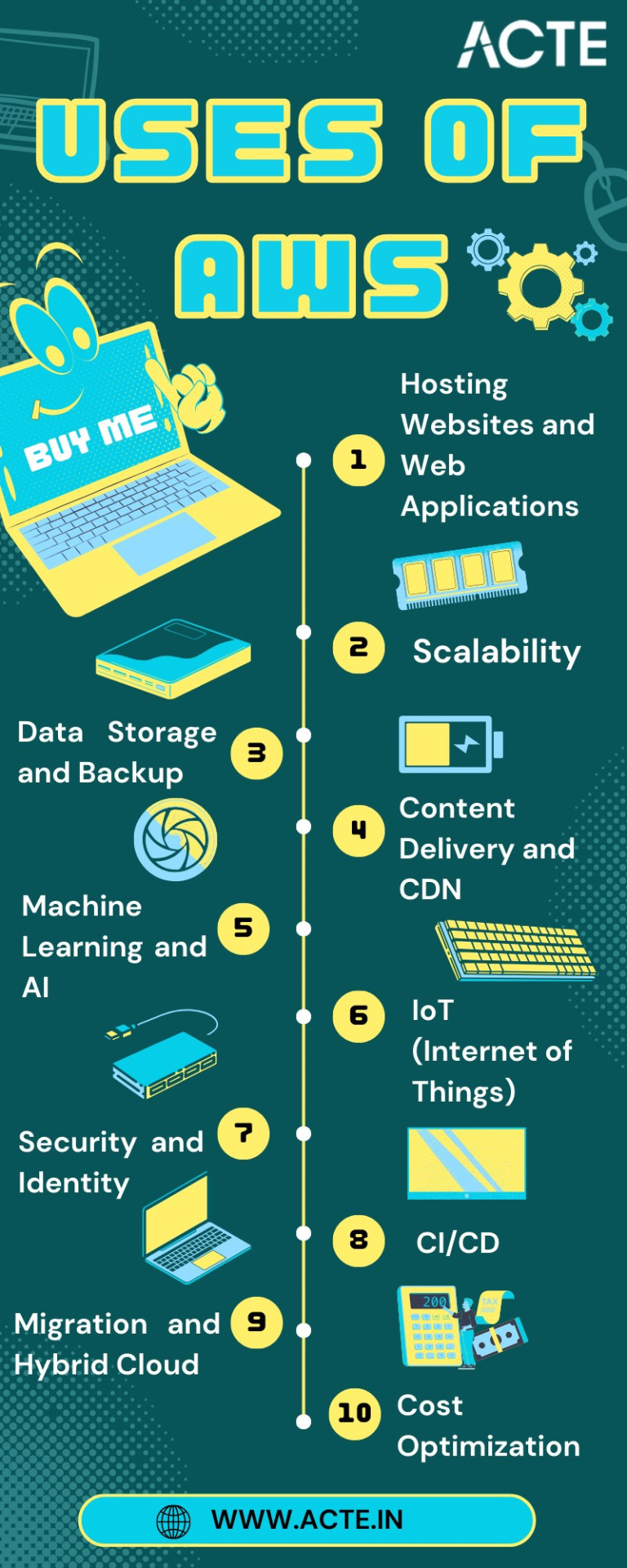
In this comprehensive journey through the expansive landscape of Amazon Web Services (AWS), we've embarked on a quest to unlock the power and potential of cloud computing. AWS, standing as a colossus in the realm of cloud platforms, has emerged as a transformative force that transcends traditional boundaries.
As we bring this odyssey to a close, one thing is abundantly clear: AWS is not merely a collection of services and technologies; it's a catalyst for innovation, a cornerstone of scalability, and a conduit for efficiency. It has revolutionized the way businesses operate, empowering them to scale dynamically, innovate relentlessly, and navigate the complexities of the digital era.
In a world where data reigns supreme and agility is a competitive advantage, AWS has become the bedrock upon which countless industries build their success stories. Its versatility, reliability, and ever-expanding suite of services continue to shape the future of technology and business.
Yet, AWS is not a solitary journey; it's a collaborative endeavor. Institutions like ACTE Technologies play an instrumental role in empowering individuals to master the AWS course. Through comprehensive training and education, learners are not merely equipped with knowledge; they are forged into skilled professionals ready to navigate the AWS universe with confidence.
As we contemplate the future, one thing is certain: AWS is not just a destination; it's an ongoing journey. It's a journey toward greater innovation, deeper insights, and boundless possibilities. AWS has not only transformed the way we work; it's redefining the very essence of what's possible in the digital age. So, whether you're a seasoned cloud expert or a newcomer to the cloud, remember that AWS is not just a tool; it's a gateway to a future where technology knows no bounds, and success knows no limits.
6 notes
·
View notes
Text
"How Do AWS Solution Architects Design Serverless Applications Effectively?"

An AWS Solution Architect plays a pivotal role in helping organizations leverage cloud computing effectively. As businesses increasingly migrate to the cloud, this role has become essential for designing, deploying, and managing robust and scalable solutions. If you're considering a career as an AWS Solution Architect or working alongside one, understanding their core responsibilities is crucial. Let’s explore the key tasks that define this critical role.
1. Designing Scalable and Reliable Cloud Architectures
The primary responsibility of an AWS Solution Architect is to design cloud architectures that align with the organization's business goals. This involves:
Scalability: Ensuring the infrastructure can handle growth and increased demand.
Reliability: Implementing high-availability solutions to minimize downtime.
Flexibility: Designing systems that can adapt to changing business needs.
Architects achieve these goals by leveraging AWS services such as Auto Scaling, Elastic Load Balancing, and AWS Lambda.
2. Identifying the Right AWS Services
AWS offers a vast array of services, and selecting the right combination is critical for a successful cloud solution. AWS Solution Architects must:
Understand the unique requirements of the organization.
Choose services that maximize performance and cost-efficiency.
Evaluate options like Amazon RDS, Amazon S3, EC2, and DynamoDB for specific use cases.
For instance, they might recommend AWS Aurora for database management or AWS CloudFront for content delivery.
3. Implementing Security Best Practices
Cloud security is a top priority, and AWS Solution Architects ensure that the organization's systems are protected against potential threats. Their responsibilities include:
Configuring Identity and Access Management (IAM) roles to control user permissions.
Encrypting sensitive data using tools like AWS Key Management Service (KMS).
Designing secure network architectures with Virtual Private Cloud (VPC) and Security Groups.
By adhering to AWS’s Well-Architected Framework, architects ensure compliance with industry standards and best practices.
4. Cost Optimization
AWS provides various pricing models, and an AWS Solution Architect ensures that cloud solutions are cost-effective. This involves:
Analyzing workloads to optimize resource usage.
Using services like AWS Cost Explorer to monitor expenses.
Recommending cost-saving measures such as reserved instances, spot instances, and serverless architectures.
Their goal is to reduce unnecessary expenses without compromising performance or scalability.
5. Collaborating with Development and Operations Teams
AWS Solution Architects serve as a bridge between development and operations teams, ensuring seamless communication and collaboration. Key responsibilities include:
Assisting developers in deploying applications on the cloud.
Working with operations teams to monitor and manage infrastructure.
Aligning cloud strategies with organizational goals.
This collaboration often follows the DevOps approach, emphasizing continuous integration, delivery, and automation.
6. Conducting Performance Optimization
Once a cloud solution is implemented, architects continuously monitor and optimize performance. This includes:
Identifying bottlenecks in the infrastructure.
Implementing caching mechanisms using services like Amazon ElastiCache.
Scaling resources dynamically to maintain optimal performance during peak traffic.
Their proactive approach ensures a seamless user experience and maximizes system efficiency.
7. Ensuring Disaster Recovery and Backup Solutions
To safeguard data and maintain business continuity, AWS Solution Architects design robust disaster recovery plans. Their responsibilities include:
Implementing backup solutions using AWS Backup or Amazon S3 Glacier.
Configuring disaster recovery architectures such as multi-region deployments.
Ensuring minimal downtime and data loss in case of failures.
These strategies provide organizations with peace of mind and resilience against unexpected events.
8. Providing Technical Guidance
AWS Solution Architects act as subject matter experts, offering guidance to stakeholders on technical decisions. This involves:
Educating teams on AWS services and capabilities.
Presenting architectural designs to management and explaining their benefits.
Advising on cloud adoption strategies and migration plans.
Their insights help organizations make informed decisions and achieve their goals effectively.
9. Supporting Cloud Migration Efforts
For organizations transitioning to AWS, Solution Architects play a vital role in ensuring a smooth migration process. Responsibilities include:
Assessing existing systems to plan the migration strategy.
Choosing appropriate tools like AWS Migration Hub and AWS DataSync.
Minimizing downtime and ensuring data integrity during the migration.
They also address challenges such as compatibility issues and scalability requirements during the migration process.
10. Staying Updated on AWS Innovations
AWS frequently introduces new services and features. An AWS Solution Architect must stay informed about the latest updates to leverage cutting-edge technologies. This involves:
Attending AWS events and webinars.
Exploring new tools like AWS SageMaker for machine learning or AWS Outposts for hybrid cloud environments.
Evaluating how emerging trends like serverless computing or edge computing can benefit their organization.
Continuous learning is a crucial aspect of the role, ensuring they remain ahead in the dynamic cloud landscape.
Conclusion
The role of an AWS Solution Architect is multifaceted, requiring a combination of technical expertise, strategic thinking, and effective communication. From designing scalable architectures to optimizing costs and ensuring security, their contributions are integral to the success of cloud-based solutions.
For organizations, having a skilled AWS Solution Architect can transform cloud strategies, streamline operations, and drive innovation. For professionals, this role offers a rewarding career path with endless opportunities for growth and impact. If you're considering a career in cloud computing, becoming an AWS Solution Architect is an excellent choice to make a meaningful difference in the tech world.
#awstraining#cloudservices#softwaredeveloper#training#iot#data#azurecloud#artificialintelligence#softwareengineer#cloudsecurity#cloudtechnology#business#jenkins#softwaretesting#onlinetraining#ansible#microsoftazure#digitaltransformation#ai#reactjs#awscertification#google#cloudstorage#git#devopstools#coder#innovation#cloudsolutions#informationtechnology#startup
0 notes
Text
AWS Aurora vs RDS: An In-Depth Comparison

AWS Aurora vs. RDS
Amazon Web Services (AWS) offers a range of database solutions, among which Amazon Aurora and Amazon Relational Database Service (RDS) are prominent choices for relational database management. While both services cater to similar needs, they have distinct features, performance characteristics, and use cases. This comparison will help you understand the differences and make an informed decision based on your specific requirements.
What is Amazon RDS?
Amazon RDS is a managed database service that supports several database engines, including MySQL, PostgreSQL, MariaDB, Oracle, and Microsoft SQL Server. RDS simplifies the process of setting up, operating, and scaling a relational database in the cloud by automating tasks such as hardware provisioning, database setup, patching, and backups.
What is Amazon Aurora?
Amazon Aurora is a MySQL and PostgreSQL-compatible relational database built for the cloud, combining the performance and availability of high-end commercial databases with the simplicity and cost-effectiveness of open-source databases. Aurora is designed to deliver high performance and reliability, with some advanced features that set it apart from standard RDS offerings.
Performance
Amazon RDS: Performance depends on the selected database engine and instance type. It provides good performance for typical workloads but may require manual tuning and optimization.
Amazon Aurora: Designed for high performance, Aurora can deliver up to five times the throughput of standard MySQL and up to three times the throughput of standard PostgreSQL databases. It achieves this through distributed, fault-tolerant, and self-healing storage that is decoupled from compute resources.
Scalability
Amazon RDS: Supports vertical scaling by upgrading the instance size and horizontal scaling through read replicas. However, the scaling process may involve downtime and requires careful planning.
Amazon Aurora: Offers seamless scalability with up to 15 low-latency read replicas, and it can automatically adjust the storage capacity without affecting database performance. Aurora’s architecture allows it to scale out and handle increased workloads more efficiently.
Availability and Durability
Amazon RDS: Provides high availability through Multi-AZ deployments, where a standby replica is maintained in a different Availability Zone. In case of a primary instance failure, RDS automatically performs a failover to the standby replica.
Amazon Aurora: Enhances availability with six-way replication across three Availability Zones and automated failover mechanisms. Aurora’s storage is designed to be self-healing, with continuous backups to Amazon S3 and automatic repair of corrupted data blocks.
Cost
Amazon RDS: Generally more cost-effective for smaller, less demanding workloads. Pricing depends on the chosen database engine, instance type, and storage requirements.
Amazon Aurora: Slightly more expensive than RDS due to its advanced features and higher performance capabilities. However, it can be more cost-efficient for large-scale, high-traffic applications due to its performance and scaling advantages.
Maintenance and Management
Amazon RDS: Offers automated backups, patching, and minor version upgrades. Users can manage various configuration settings and maintenance windows, but they must handle some aspects of database optimization.
Amazon Aurora: Simplifies maintenance with continuous backups, automated patching, and seamless version upgrades. Aurora also provides advanced monitoring and diagnostics through Amazon CloudWatch and Performance Insights.
Use Cases
Amazon RDS: Suitable for a wide range of applications, including small to medium-sized web applications, development and testing environments, and enterprise applications that do not require extreme performance or scalability.
Amazon Aurora: Ideal for mission-critical applications that demand high performance, scalability, and availability, such as e-commerce platforms, financial systems, and large-scale enterprise applications. Aurora is also a good choice for organizations looking to migrate from commercial databases to a more cost-effective cloud-native solution.
Conclusion
Amazon Aurora vs Amazon RDS both offer robust, managed database solutions in the AWS ecosystem. RDS provides flexibility with multiple database engines and is well-suited for typical workloads and smaller applications. Aurora, on the other hand, excels in performance, scalability, and availability, making it the preferred choice for demanding and large-scale applications. Choosing between RDS and Aurora depends on your specific needs, performance requirements, and budget considerations.
0 notes
Text
What Is Amazon RDS? Amazon RDS Best Practices, Benefits
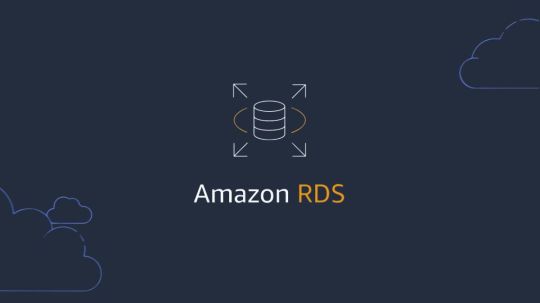
What is Amazon RDS?
The service for relational databases Designed to minimize total cost of ownership, Amazon Relational Database Service (Amazon RDS) is easy to use. Setting up, running, and scaling to meet demand is easy. Tasks related to provisioning, configuration, backup, and patching are among the undifferentiated database management tasks that are automated by Amazon RDS. With Amazon RDS, users can quickly establish a new database and personalize it to suit their needs using two deployment options and eight engines. Customers can optimize performance with features including AWS Graviton3-based instances, optimized writes and reads, and Multi-AZ with two readable standbys. They can also select from a variety of pricing choices to efficiently control expenses.
New developments with Amazon RDS
Aurora
Fully compatible with MySQL and PostgreSQL, Amazon Aurora offers unmatched performance and availability on a global scale for a tenth of the price of commercial databases. With features like Amazon Aurora Serverless, which can scale to hundreds of thousands of transactions in a split second, Amazon Aurora I/O-Optimized, which predicts prices, and zero-ETL integrations to Amazon Redshift, which provide near-real-time analytics on your transactional data, you can take advantage of improved capabilities that delight your users.
The Amazon RDS
When you utilize Amazon RDS, you may start using the same commercial and open source database software that you are accustomed to and trust, like MariaDB, PostgreSQL, MySQL, SQL Server, Oracle, and Db2. With support for AWS Graviton3-based instances, Amazon Elastic Block Store (Amazon EBS), and io2 Block Express storage, you can take advantage of the innovation of the AWS stack and eliminate the burden of undifferentiated administrative duties.
Creating applications for generative AI
The performance of your generative AI applications can be enhanced by using Amazon Relational Database Service (Amazon RDS) for PostgreSQL and Amazon Aurora PostgreSQL-Compatible Edition. You can accomplish 20 times better queries per second than with pgvector_IVFFLAT when you combine the capabilities of Amazon Aurora Optimized Reads and pgvector_hnsw.
ML and analytics with integrations at zero ETL
With zero-ETL integrations, the laborious task of creating and overseeing ETL pipelines from live databases to data warehouses is eliminated. In order to achieve desired business objectives, zero-ETL enables clients to access their transactional data in almost real-time for analytics and machine learning (ML) purposes.
Possibilities for deployment
Deployment choices are flexible with Amazon RDS. Applications that need to customize the underlying database environment and operating system can benefit from the managed experience offered by Amazon Relational Database Service (Amazon RDS) Custom. Fully managed database instances can be set up in your on-premises environments using Amazon Relational Database Service (Amazon RDS) on AWS Outposts.
Use Cases
Construct mobile and web applications
Provide high availability, throughput, and storage scalability to accommodate expanding apps. Utilize adaptable pay-per-use pricing to accommodate different application usage trends.
Use managed databases instead
Instead of worrying about self-managing your databases, which may be costly, time-consuming, and complex, experiment and create new apps with Amazon RDS.
Become independent of legacy databases
By switching to Aurora, you can get rid of costly, punitive, commercial databases. When you switch to Aurora, you can obtain commercial databases’ scalability, performance, and availability for a tenth of the price.
Amazon RDS advantages
One type of managed database service is Amazon RDS. It is in charge of the majority of management duties. Amazon RDS allows you to concentrate on your application and users by removing time-consuming manual procedures.
The following are the main benefits that Amazon RDS offers over partially managed database deployments:
You can utilize database engines like IBM Db2, MariaDB, Microsoft SQL Server, MySQL, Oracle Database, and PostgreSQL, which you are already familiar with.
Backups, software patching, automatic failure detection, and recovery are all handled by Amazon RDS.
You have the option to manually create backup snapshots or enable automated backups. These backups can be used to restore a database. The Amazon RDS restoration procedure is dependable and effective.
With a primary database instance and a synchronous backup database instance that you may switch to in case of issues, you can achieve high availability. To improve read scaling, you may also employ read replicas.
In addition to the security features included in your database package, you may manage access by defining users and permissions using AWS Identity and Access Management (IAM). Putting your databases in a virtual private cloud (VPC) can also help protect them.
Read more on Govindhtech.com
#AmazonRDS#RDS#RelationalDatabaseService#PostgreSQL#MySQL#AmazonAurora#databases#AmazonEBS#New#Technews#Technology#Technologynews#Technologytrends#govindhtech
0 notes
Text
Navicat Premium Crack Free Serial Key Torrent Latest Version
Navicat Premium Torrent is a powerful database management tool that allows users to connect and manage multiple databases simultaneously. It supports a wide range of database systems, including:
MySQL
MariaDB
Oracle
PostgreSQL
SQLite
Microsoft SQL Server
Amazon Redshift
MongoDB
Key Features:
Cross-Platform Compatibility: Available for Windows, macOS, and Linux.
Database Synchronization: Sync data and structure between different databases.
Data Transfer: Transfer data seamlessly across different database systems.
SQL Building Tools: Provides a visual SQL builder to simplify complex queries.
Backup and Restore: Supports backup and restoration for database systems, ensuring data safety.
Cloud Database Connection: Connects to cloud databases like Amazon RDS, Microsoft Azure, and Google Cloud.
Data Visualization: Offers data visualization tools like charts for better understanding of your data.
Automation: Allows scheduling of tasks such as backups, data synchronization, or reports.
User Management: Manages users and privileges for secure access to databases.
Navicat Premium is widely used by database administrators, developers, and IT professionals to manage and maintain databases efficiently.
0 notes